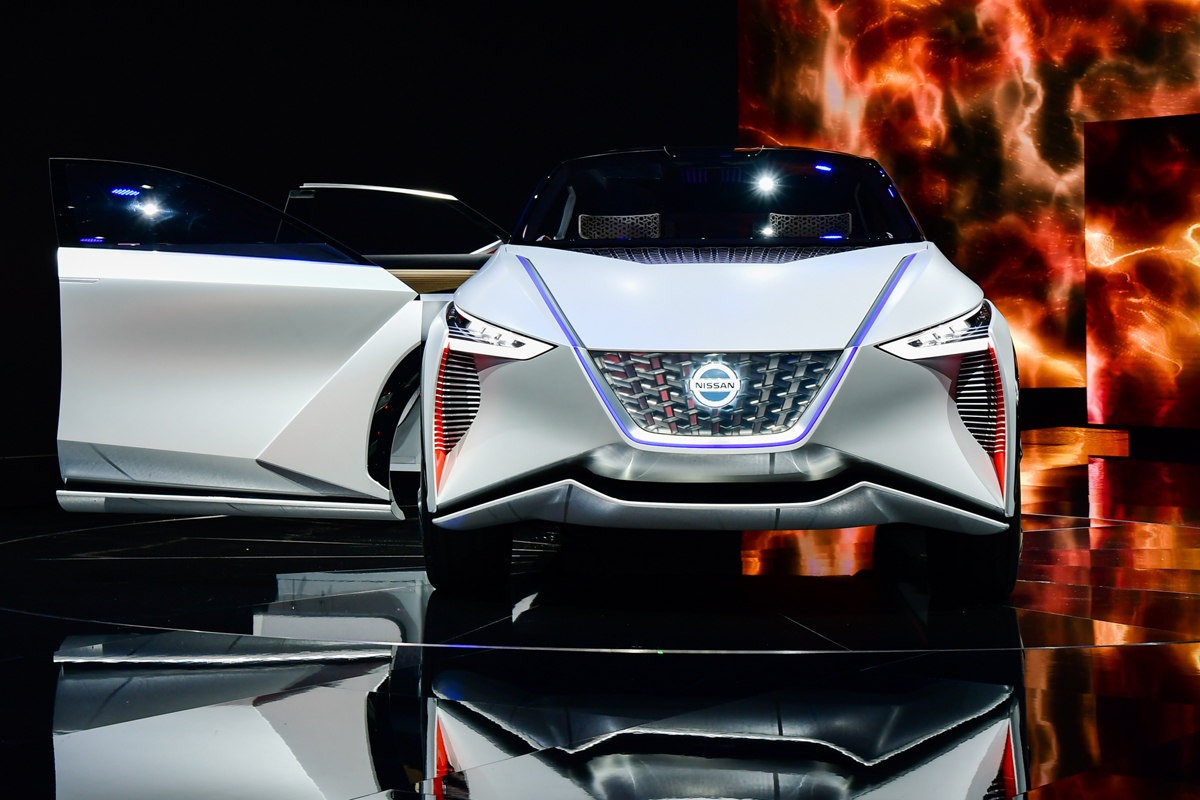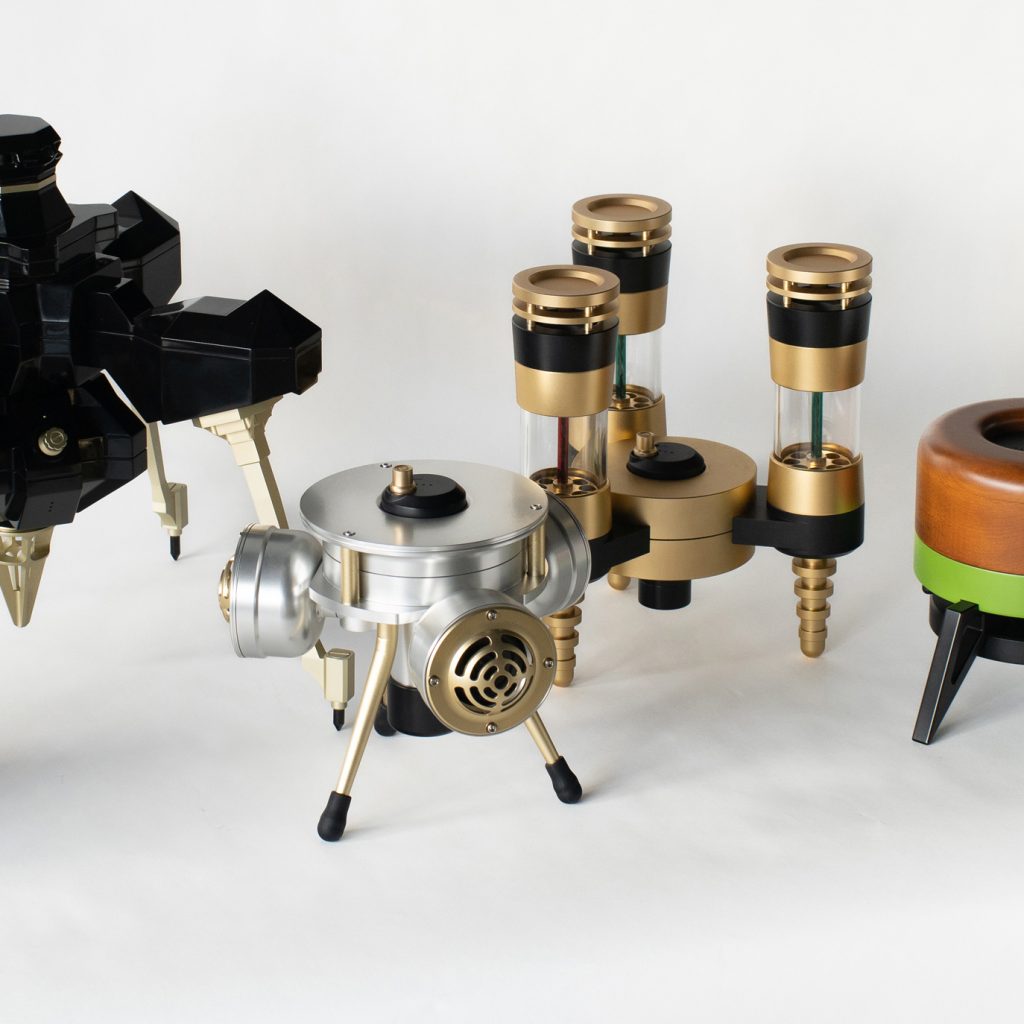The Future of Car Design at the Tokyo Motor Show
Japanese brands take up intrinsic, rather than Western influences


by Michael Frank
Last week in Japan the press got a preview of the Tokyo Motor Show—which officially opened to the public on the weekend. Most attendees will see concepts from Japanese carmakers (it’s largely a domestically focused show by Japanese carmakers for Japanese buyers), we saw a shake-up of sorts. Designers spoke repeatedly about looking back at intrinsically Japanese values in designing their cars. This might seem potentially nationalistic, but instead it means something quite the opposite—forcing the world’s buyers to confront, and even to lust after, design objects that embody values foreign to one’s own aesthetic.
We spoke with designers at Lexus, Mazda, Subaru and Nissan to get their take on their own concept cars and Japanese design, but they also broadly discussed this underlying thread and how to carry it off in an age when cars are increasingly less stylized and more anonymous.

On Bringing Out Japanese-ness
Nissan’s Alfonso Albaisa is now head of Global Design for the carmaker, that also includes Mitsubushi, as well as Renault. Albaisa says the IMx concept Nissan’s showing at Tokyo would be an EV of a different sort than Nissan’s Leaf, which was designed to wear its electric drivetrain on its sleeve, so people know about its powertrain from the car’s appearance. It, like the Prius, sells the notion of electrification and very overtly looks different.
“It’s true that EV’s have different proportions because the batteries are in the floor, and that gives the feeling of robustness and security. But the next generation will have a different drivetrain, with small motors at the corners, so we’re not so concerned with slender or sleek volumes,” Albaisa says, “Now we can do a relatively simple surface, give the side some negativity to balance the super positivity and thickness.” That said, the concept car has almost gratuitous lines, with deep, origami folds and an anime-like face.
Albaisa says not to worry. “There’s the danger of the cliche. It’s an obvious risk for Japanese-ness. But this is a show car; that’s a wink toward the Tokyo Motor Show. We’re here: So some of it is playing. We’re having a bit of fun.” But what isn’t just play, Albaisa says, is a nod to a kind of Japanese aesthetics called “ike,” where any production version of a car like this would be far simpler. “You don’t show off the design, say of clothing. It’s simple, tailored. So this car is in white, but on the interior it’s this rich orange.” It’s a hint, Albaisa says, of Nissan’s next approach “Where we play more with this layering of simplicity and complexity.”

Simplicity Brings Depth
Mazda’s Yasutake Tsuchida, chief concept car designer of the gorgeous Mazda KAI CONCEPT on display agrees with the push towards simplicity; it’s why the KAI is nearly as fluid a shape as possible. “We’re truly focusing on hand-crafted-ness. We start in clay. In the mainstream you’ll find designs that start in computer-aided design and then go to clay, but for us it’s very important to do things in reverse. To start completely analog and then only subsequently switch to digital scans of the clay.”
We’re keeping things as simple as possible, and the understated-ness yields more depth rather than a too-busy design
Tsuchida, who also designed the current Mazda 3, says the KAI CONCEPT matures the hatchback design, as well as Mazda’s overall aesthetic. While he says current Mazda cars create tension between the front and rear masses via overt cut lines, the Kai is meant to be far more sculptural, to move light more fluidly around the entire car. It’s a more Japanese, and less Euro-influenced kind of design, he says. “It’s more subtle and less overt. We’re keeping things as simple as possible, and the understated-ness yields more depth rather than a too-busy design.”

Folding Light
Not everyone in Tokyo agrees on how to bring out Japanese character. Unlike Mazda’s Tsuchida, Lexus’s Hiroaki Hakamata, who was in charge of designing the LS+ Concept, a study that debuted barely on the heels of the new-for-2018 LS flagship sedan, sought to make the already prominent latticework grille even more pronounced. Here it’s draped off the front of the car almost like the pleats of a kimono, the actual functional venting moved outboard toward the wheels, with the grille itself becoming, more than ever, a jewel-like addendum.
Even so, like the Nissan IMx and the KAI CONCEPT, the sides of the LS+ grow flatter, with only subtle chrome and no door handles, and even though the front and rear look busy, Hakamata says the Japanese-ness (and the takeaway from concept to a forward direction for Lexus) is the use of laser lighting, rather than LEDs. These enhance the character lines of the concept. “We could use these to signal something like a facial expression, to communicate with the owner as he or she approaches the car.” More of these fine lines coupled with a more liquid shape indicated by that side profile of the LS+ tip Lexus’ hand just slightly, with the carmaker exploring aerodynamics and a more refined Japanese aesthetic.

Same Treat, New Wrapper
The least “out-there” show car at Tokyo is Subaru’s VIZIV Performance Concept. That’s wholly on purpose. No carmaker, perhaps on the planet, sticks closer to its roots than Subaru. Mamoru Ishii, General Manager of design at Subaru, says even show cars have to define a functionality to their aesthetic. This, he says, goes back to the very birth of Subaru, when it was an airplane-maker. Then, as now, he says, no portion of design could be superfluous.
So the VIZIV Performance Concept is relatively traditional. “We have a hood scoop, to show that it’s turbocharged, and to show an all-wheel drive image we always show bigger fenders.” But we also think this car could be a head fake. Everyone thinks it’s a look to the next WRX, but ignore that rear-door cutline, and this shape is a chunkier take on the very slow-selling BRZ rear-wheel-drive sports car. What do you get if you mash up a WRX and a BRZ? Something like the Crosstrek, which is a far more interesting car aesthetically than the base Impreza, and a BRZ with all wheel drive would sell in more markets and make its relatively meek power output less directly comparable (for the money) to, say, front-wheel-drive GTIs and rear-wheel-drive Mustangs.
Strangeness brings ideas
Japanese Aesthetics to the Fore
Cuban-born Albaisa of Nissan, explained why Nissan and other Japanese carmakers are finally embracing their own history and looking inward for inspiration. “I’ve been with the company 30 years and always coming to Japan is strange to me, always. And I love it, because strangeness brings ideas. About life, about objects.” Japanese cars should be different looking than their American and European counterparts, according to Albaisa. “That’s a more interesting world.” One, he says, that makes for more creativity. “I think Europeans and Americans should want to celebrate this difference.”
KAI CONCEPT image courtesy of Mazda, all others by Michael Frank












